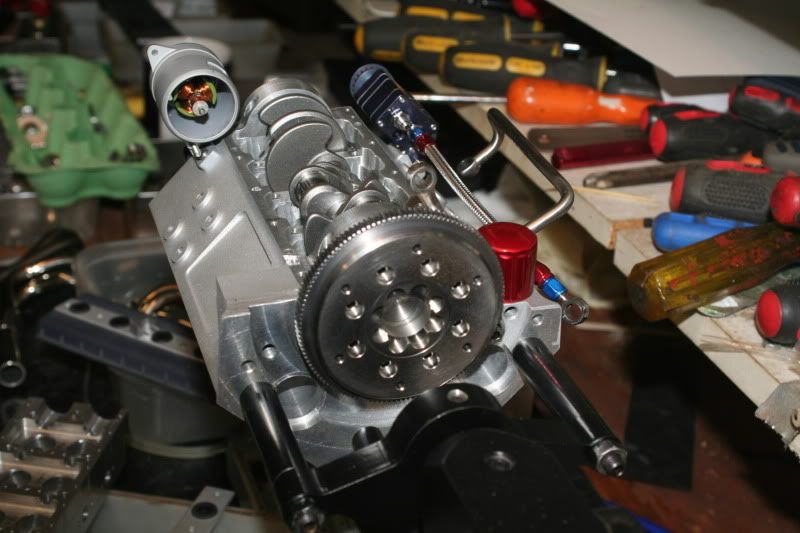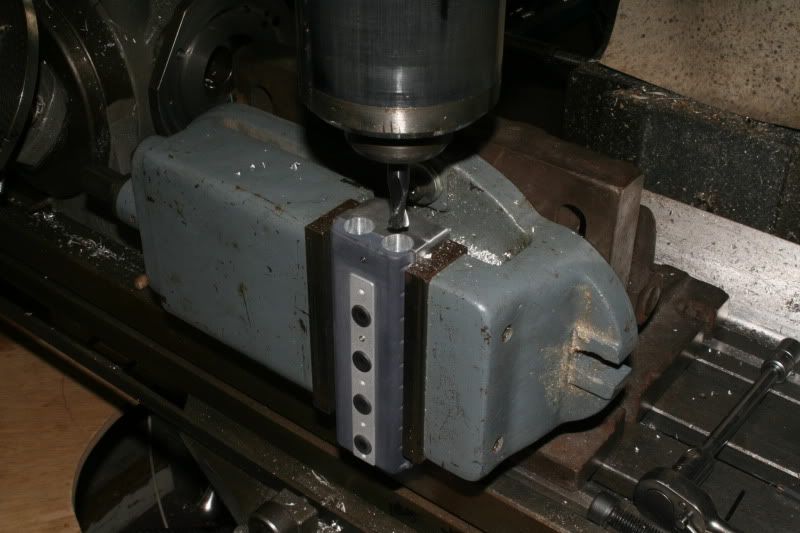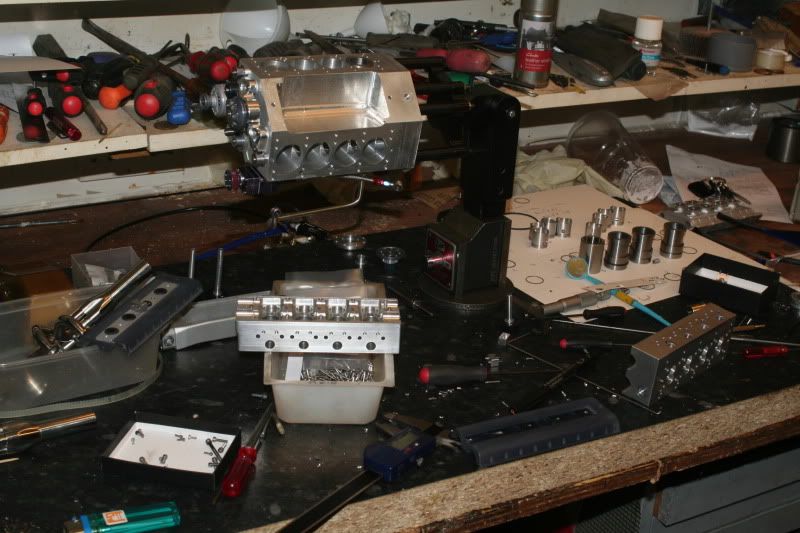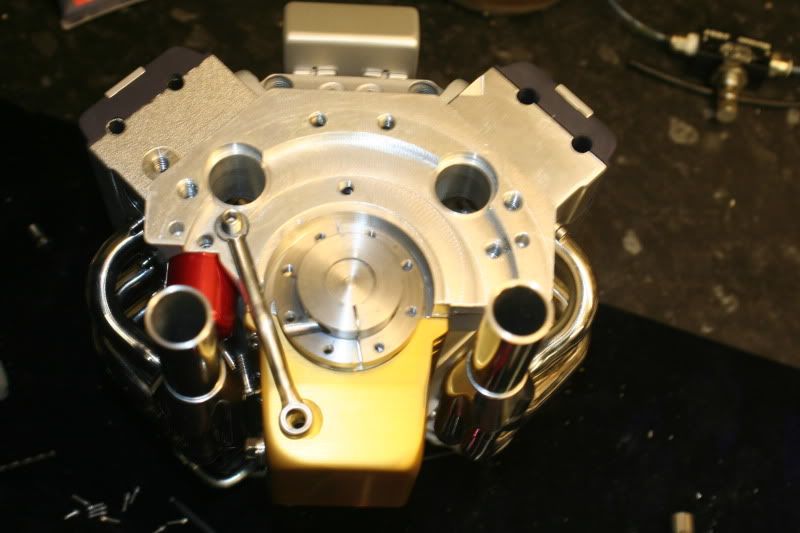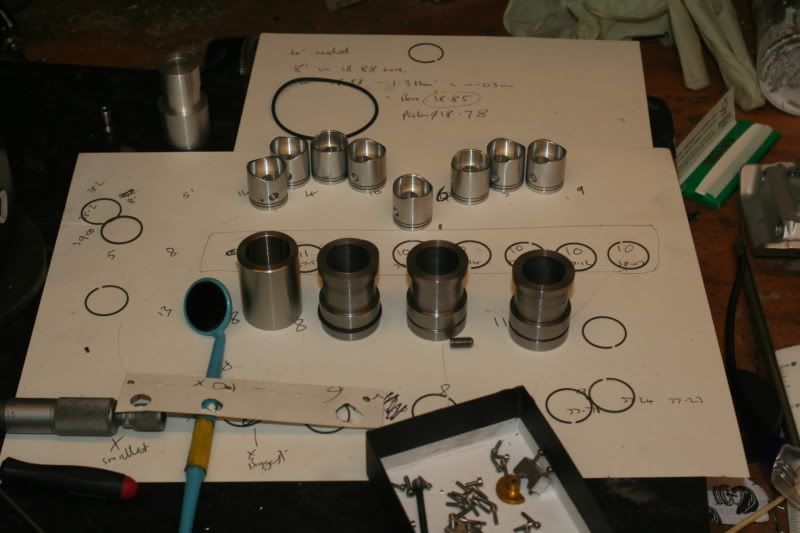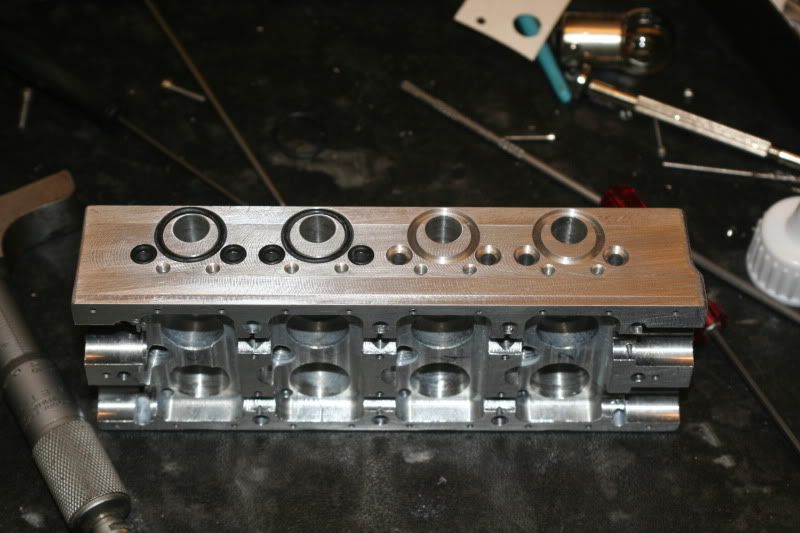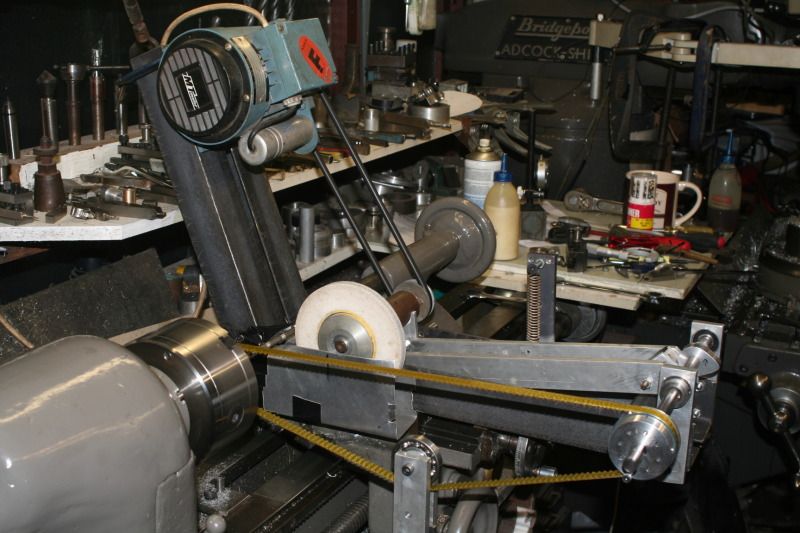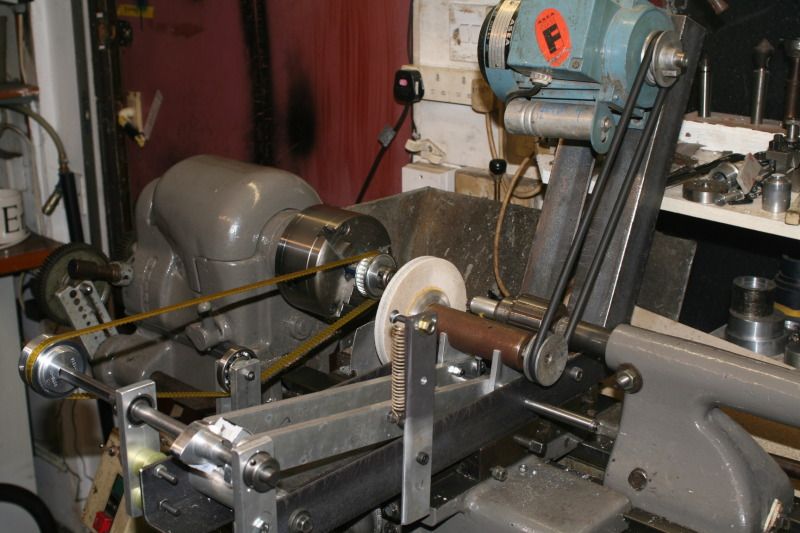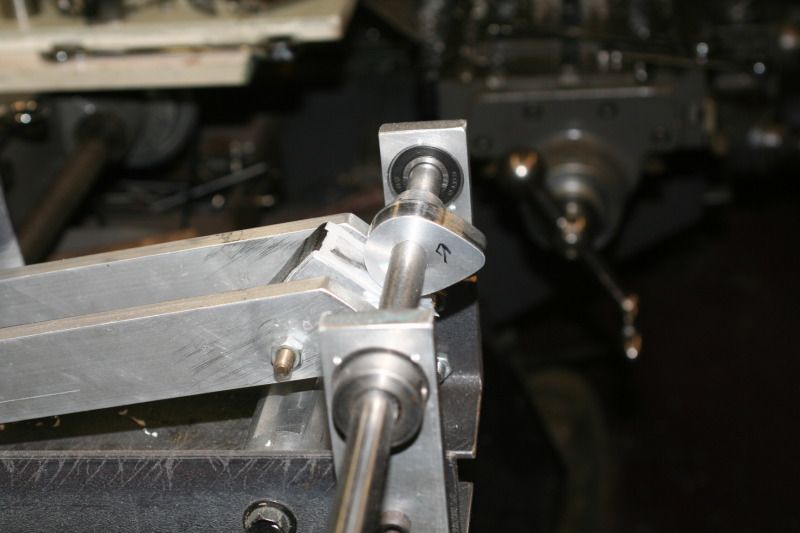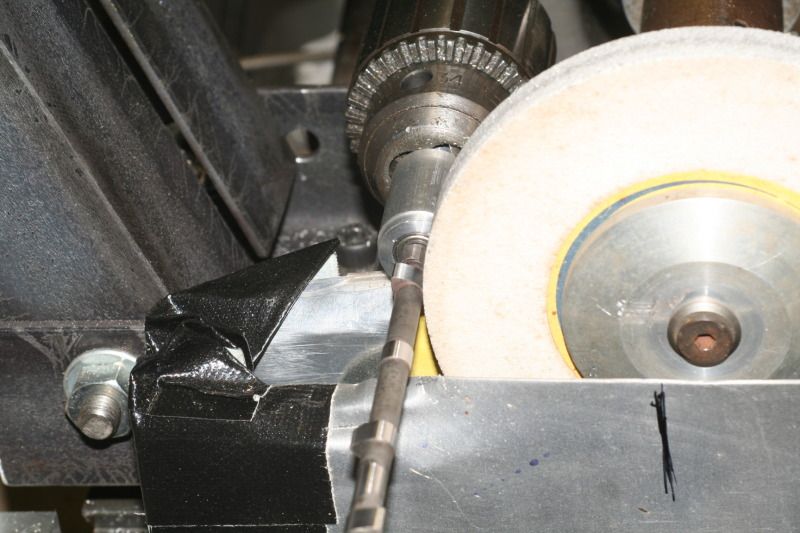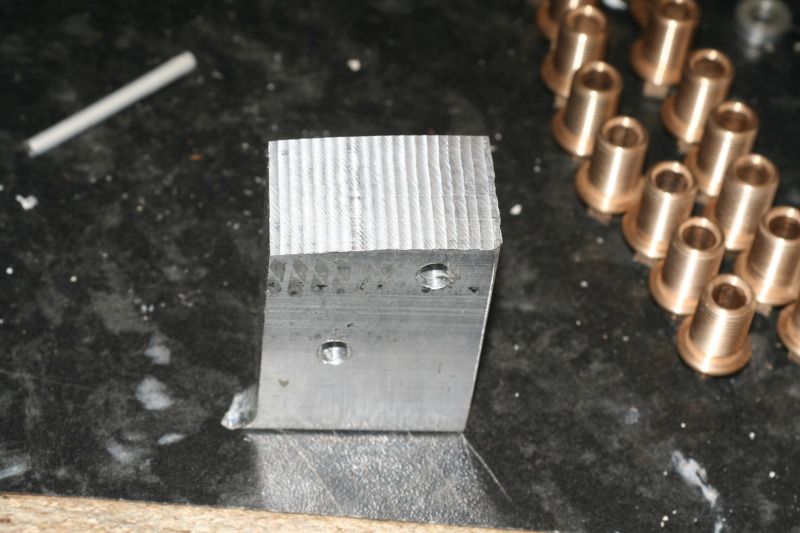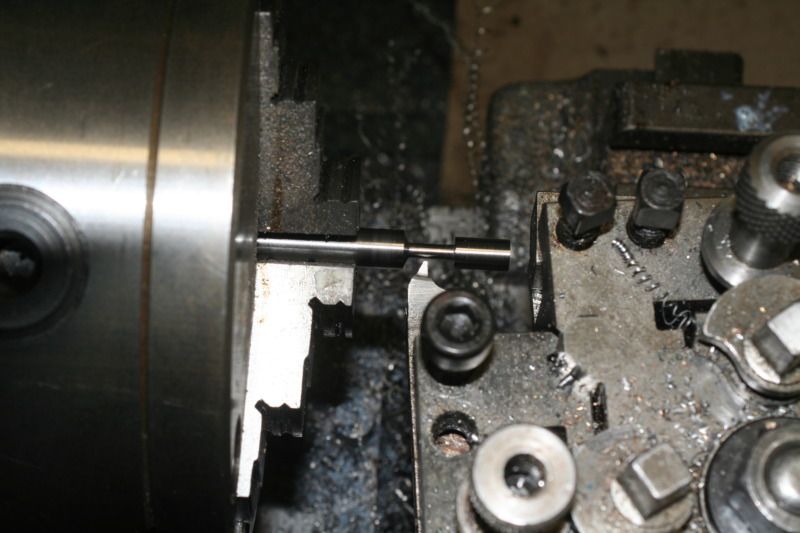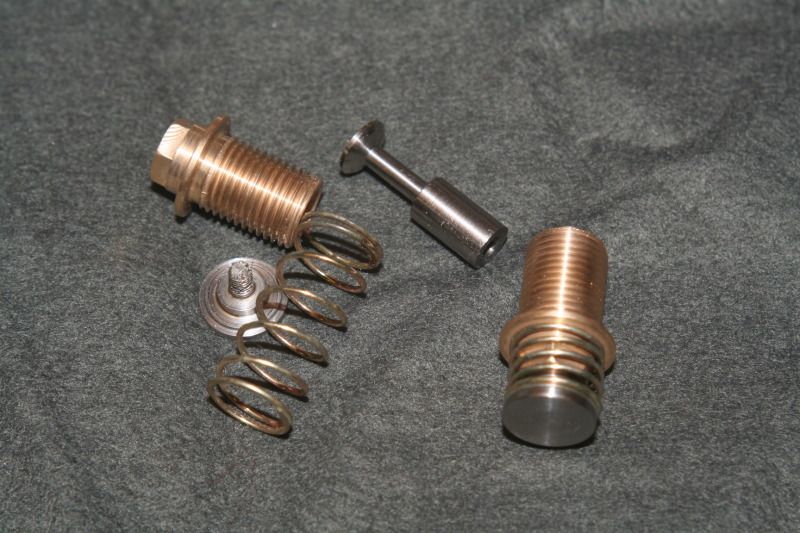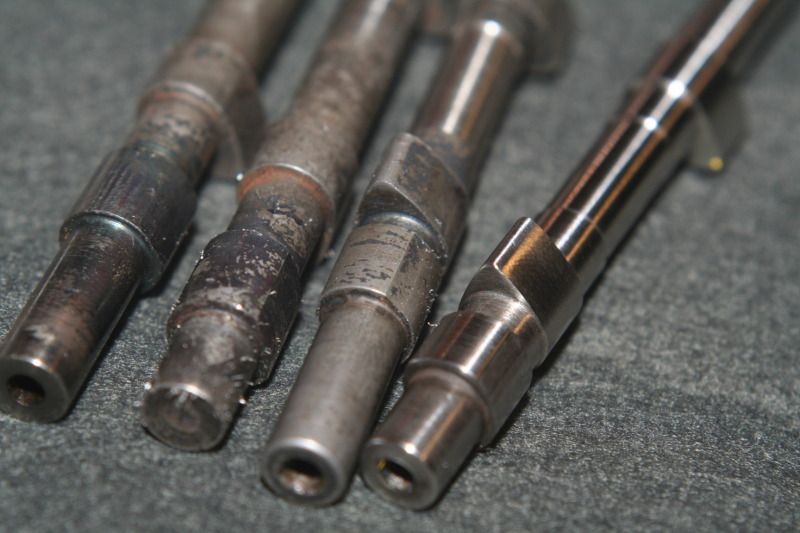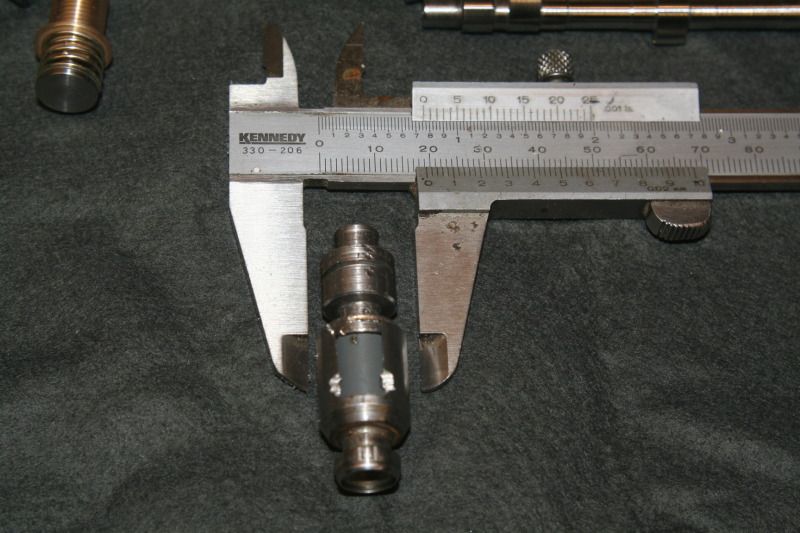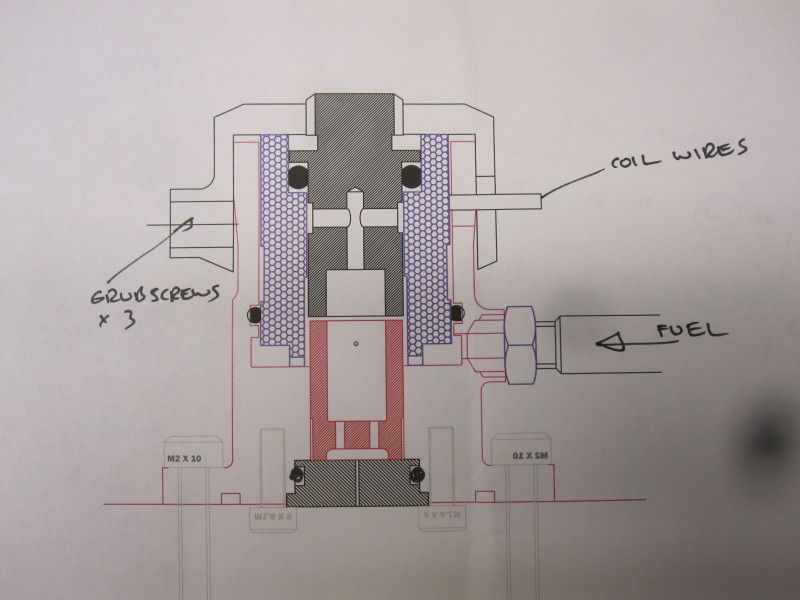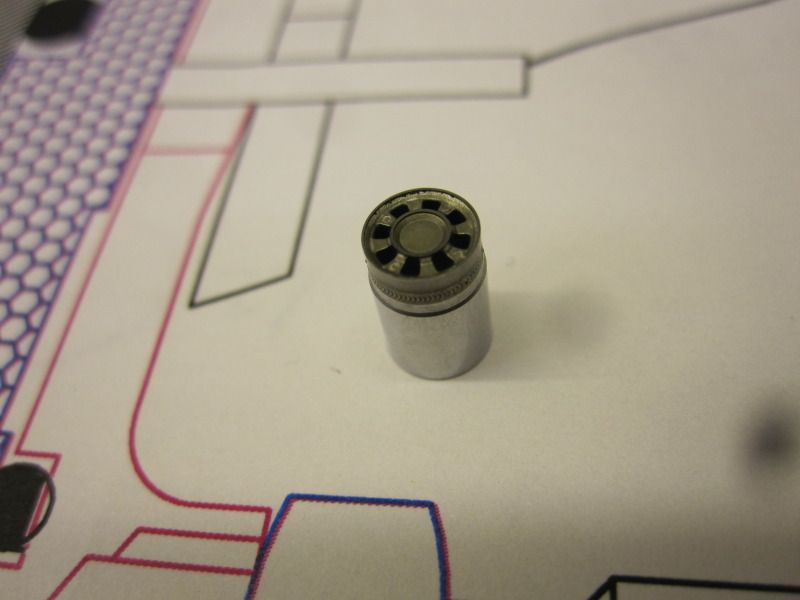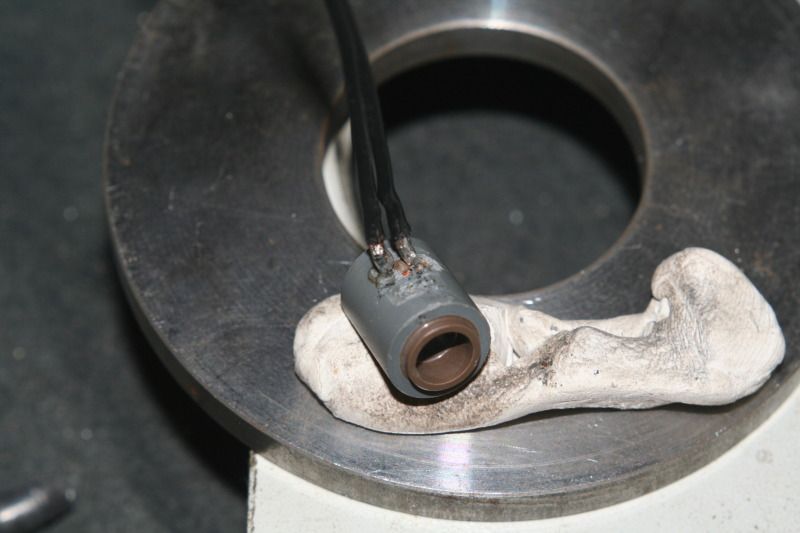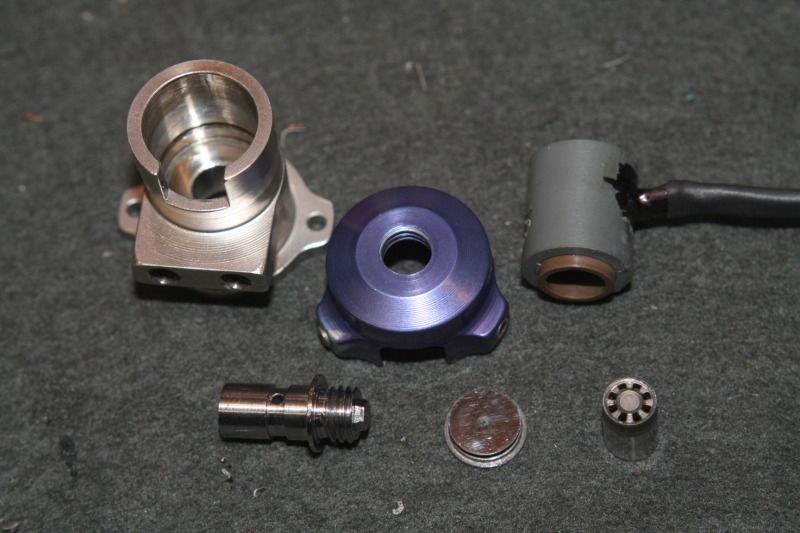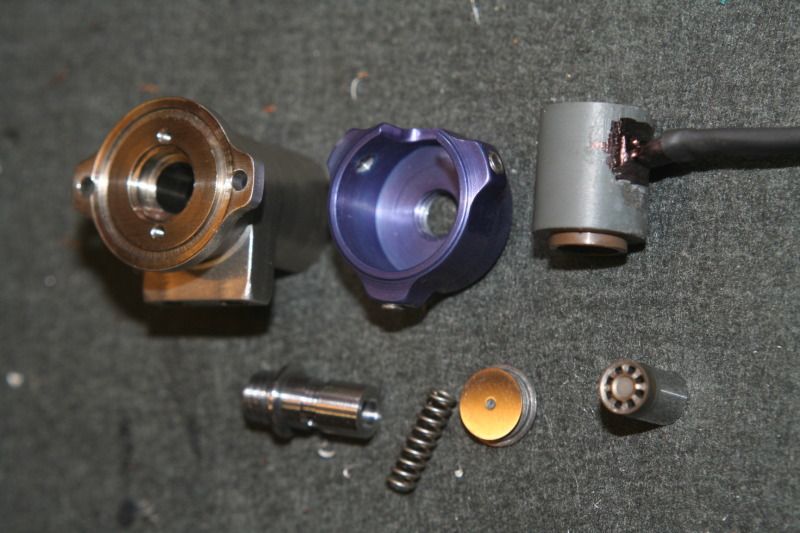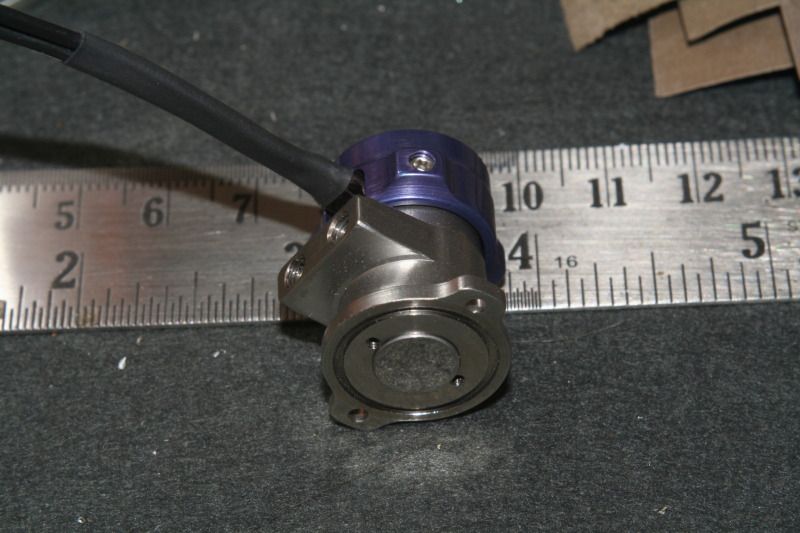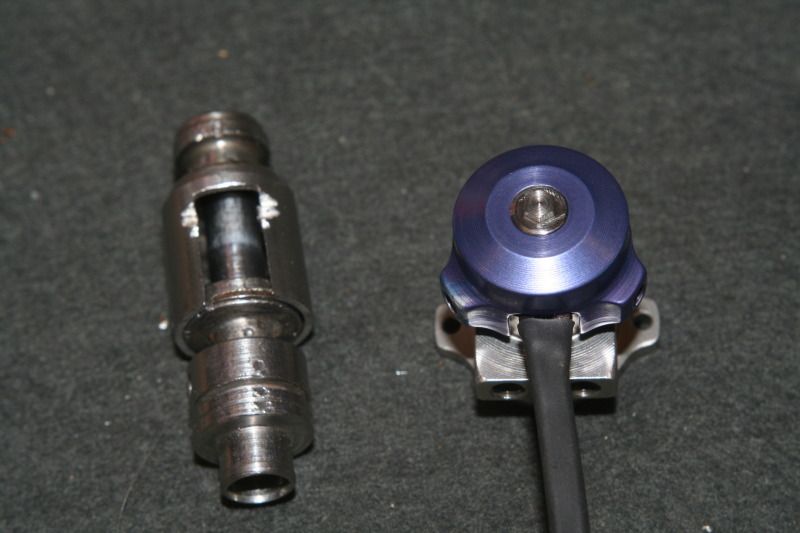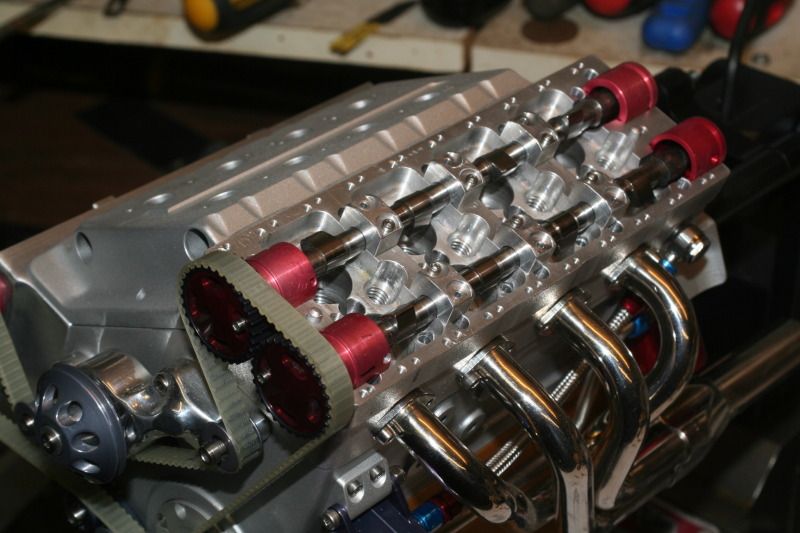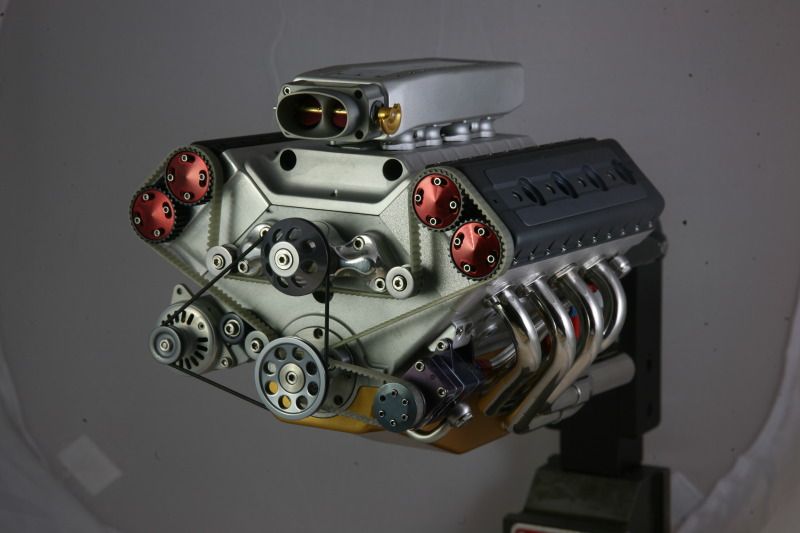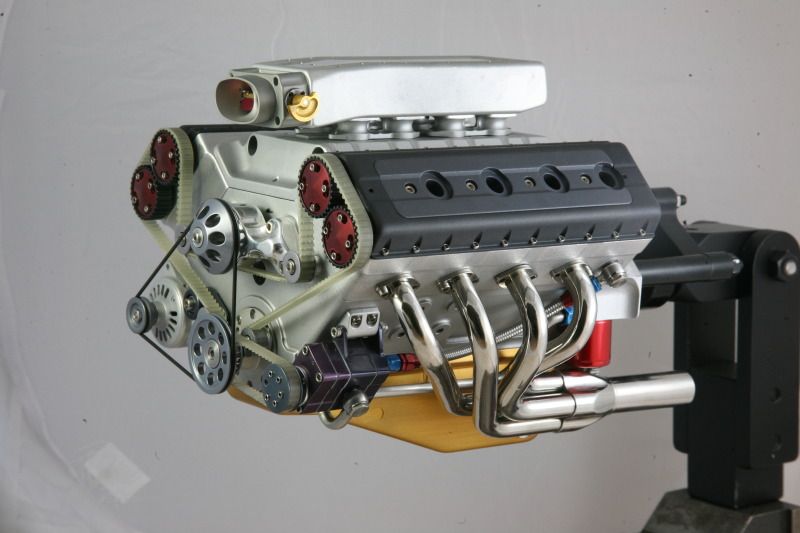Right, the injector is now finished.
The trickiest part was trying to get some wires soldered onto the coil.
The original coil was turned down a bit on the o/d, and this left 2 coil wire ends sitting flush to
the outer surface.
I had to cut away a bit of the plastic, under the microscope, to reveal enough wire to
solder to.
If I make any more injectors I will wind my own coil. It will be a lot easier, and smaller too.
As I only need one or two injectors, and they will be hidden, the size is not important, apart from the height.
This injector is about half the length of the original, but about the same on diameter.
The other hard bit was making the orifice plate. I managed to snap 4 x carbide drills, .010" dia.
My test drilling went straight through some 2mm plate, but this plate is 3mm. I got to 2.8mm then snapped the drills
trying to get deeper. I gave up in the end and thinned the plate a little.
The orifice plate was then hardened and polished flat, finishing with 3000 grit paper. Hopefully it will seal on the pintle ok.
The injector clicks away merrily under power, so I now need some high pressure pump setup to test the sealing, and the spray pattern.
I thought about using methylated spirit as the test liquid. Any better suggestions welcome.


